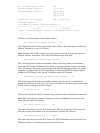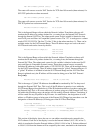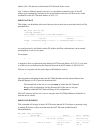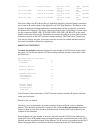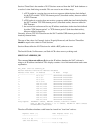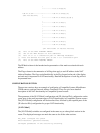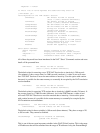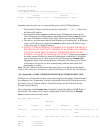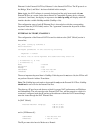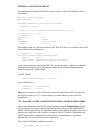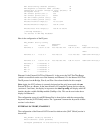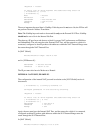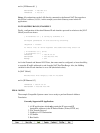<Keyword> = <Value>
To find a list of valid keywords and additional help enter "?"
[ IP Ethernet 0 ] # list
[ IP Ethernet 0 ]
Mode = Routed
RIPVersion = V2
SubnetMask = 255.255.255.224
IPAddress = 198.41.9.197
NatMap = On
The most important keyword here is NatMap. If this keyword is not set to On, the IP Port will
not perform Network Address Translation.
Note: The NatMap keyword needs to be turned On only on the External NAT Port. NatMap
should not be set to On in the Internal Nat Port.
The other two IP port keywords that are critical for proper NAT performance are IPAddress
and SubnetMask. The user must have the External NAT Port, and the network to which it is
connected, configured so that IP packets with addresses within the NAT External Range enter
the router through the NAT External Port.
In [NAT Global]:
Entered External range: 198.41.9.204
and in [ IP Ethernet 0 ]:
SubnetMask = 255.255.255.224
IPAddress = 198.41.9.197
The IP port must also have its Mode set to Routed.
INTERNAL NAT PORT, EXAMPLE 3
The configuration of the internal NAT port and its relation to the [NAT Global] section is
shown next.
[ IP Ethernet 0 ] # config ip ethernet 0.1
Configure parameters in this section by entering:
<Keyword> = <Value>
To find a list of valid keywords and additional help enter "?"
[ IP Ethernet 0.1 ] # list
[ IP Ethernet 0.1 ]
SubnetMask = 255.255.0.0
IPAddress = 10.5.0.1
NatMap = Off
Again, the user must have the Internal NAT Port, and the network to which it is connected,
configured such that IP packets with addresses within the NAT Internal Range enter the
router through the NAT Internal Port.
In [NAT Global]:
Entered Internal range(s): 10.5.0.0/16



